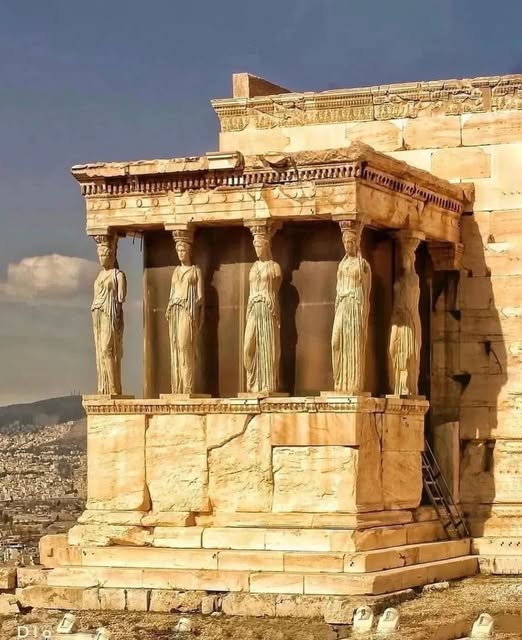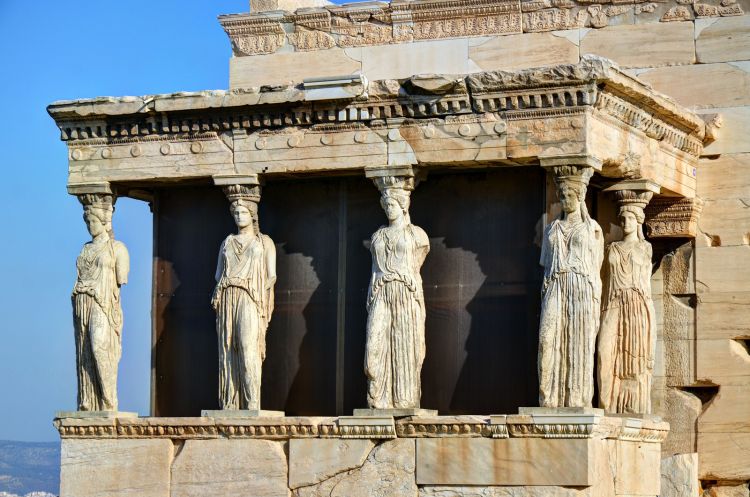
The Erechtheion (or Erechtheum) is an ancient Greek temple constructed on the acropolis of Athens between 421 and 406 BCE in the Golden Age of the city in order to house the ancient wooden cult statue of Athena and generally glorify the great city at the height of its power and influence. The Erechtheion has suffered a troubled history of misuse and neglect, but with its prominent position above the city and porch of six Caryatids, it remains one of the most distinctive buildings from antiquity.

The project to replace the damaged buildings of the acropolis following the Persian attack on the city in 480 BCE was begun in 447 BCE, instigated by Pericles, supervised by Pheidias, and funded by surplus from the war treasury of the Delian League. The results would include the Parthenon and new Propylaea on the Acropolis itself and an Odeion and the Temple of Hephaistos. The final piece to complete the magnificent complex of temples on the acropolis was the Erechtheion, begun in 421 BCE during the so-called Peace of Nikias. However, the project was interrupted by resumption of hostilities between Athens and Sparta (the Sicilian expedition), and the temple was not finally completed until 406 BCE under the supervision of the architect Philocles.
The Erechtheion, named after the demi-god Erechtheus, the mythical Athenian king, was conceived as a suitable structure to house the ancient wooden cult statue of Athena, which maintained its religious significance despite the arrival of the gigantic chryselephantine statue within the nearby Parthenon. The building also had other functions, though, notably as the shrine centre for other more ancient cults: to Erechtheus, his brother Boutes – the Ploughman, Pandrosos, the mythical first Athenian king Kekrops (or Cecrops) – half-man, half-snake, and the gods Hephaistos and Poseidon.
As with the other new buildings on the acropolis, the Erechtheion was built from Pentelic marble which came from the nearby Mt. Pentelicus and was celebrated for its pure white appearance and fine grain. It also contains traces of iron which over time have oxidised, giving the marble a soft honey colour, a quality particularly evident at sunrise and sunset.


